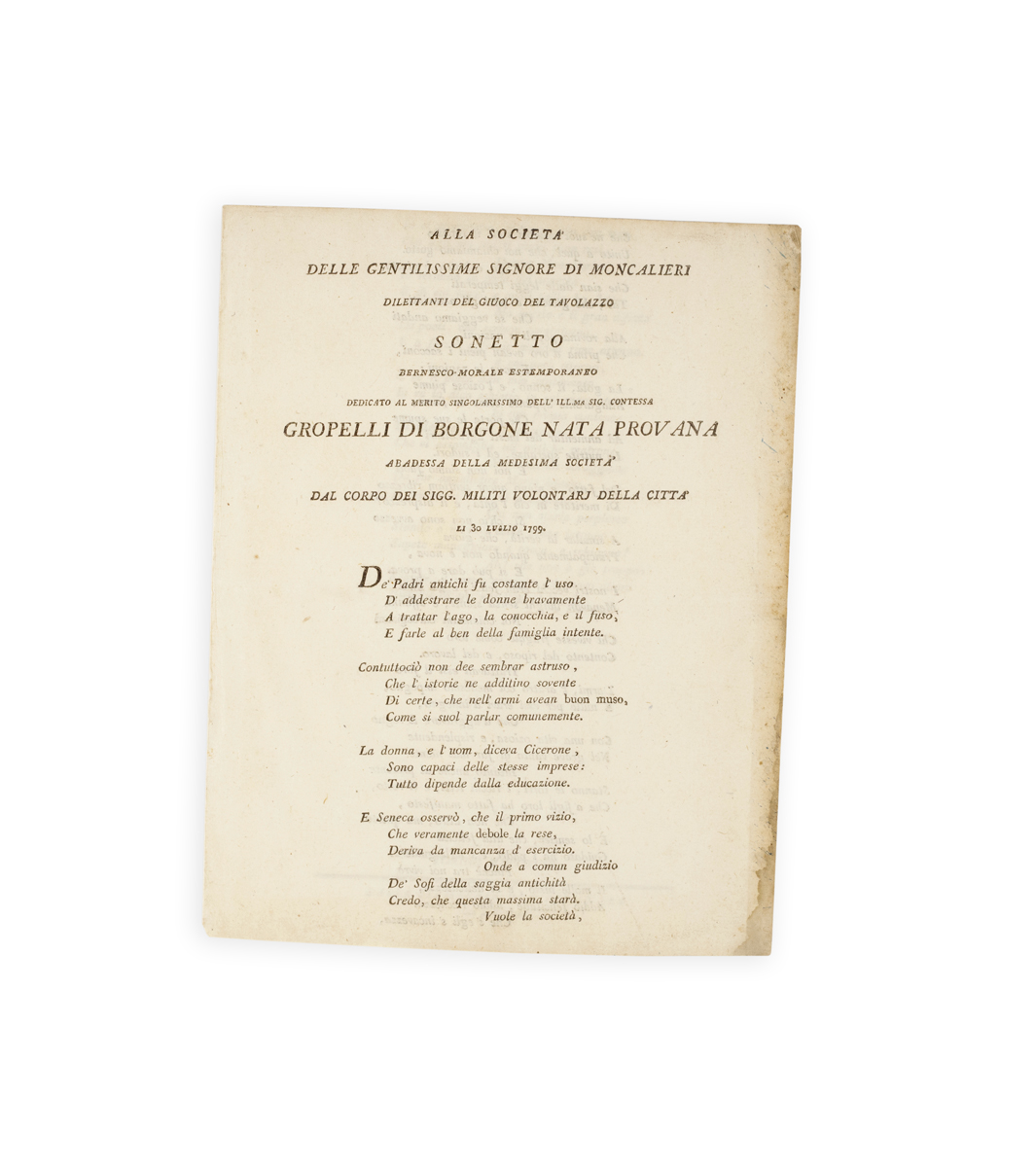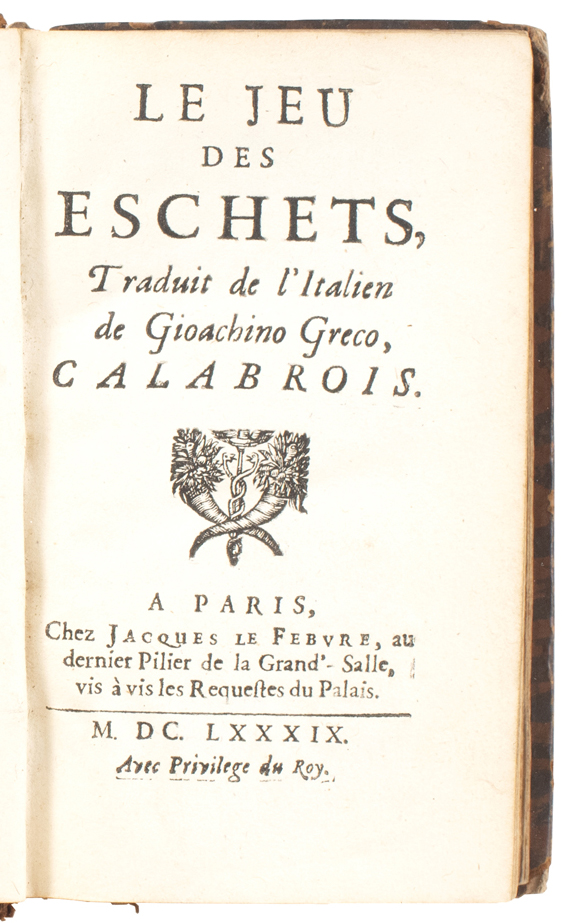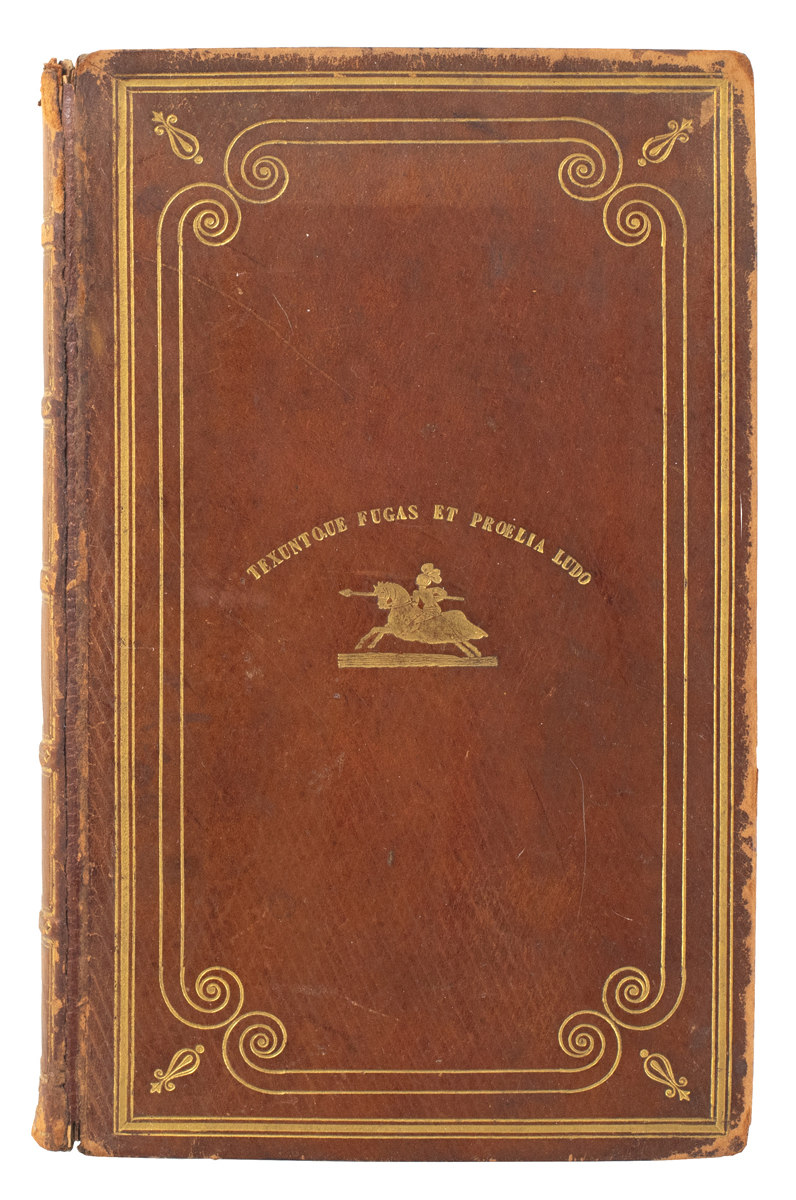
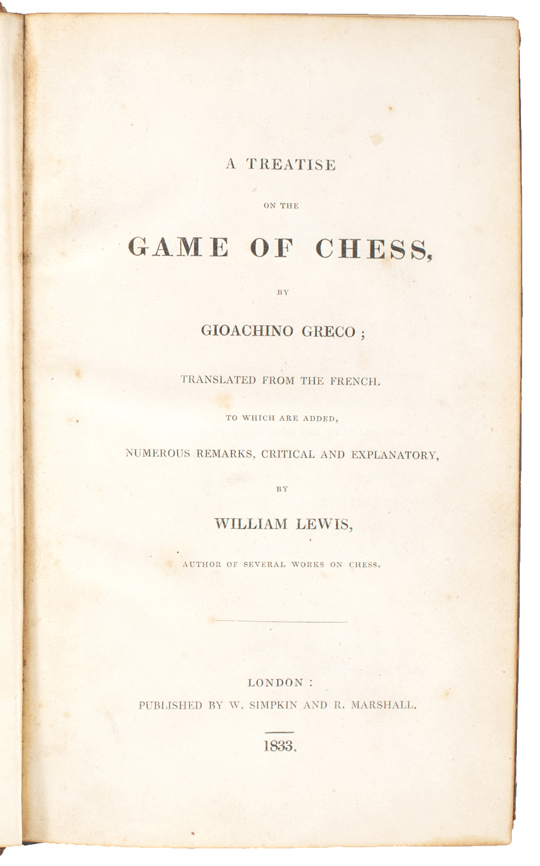
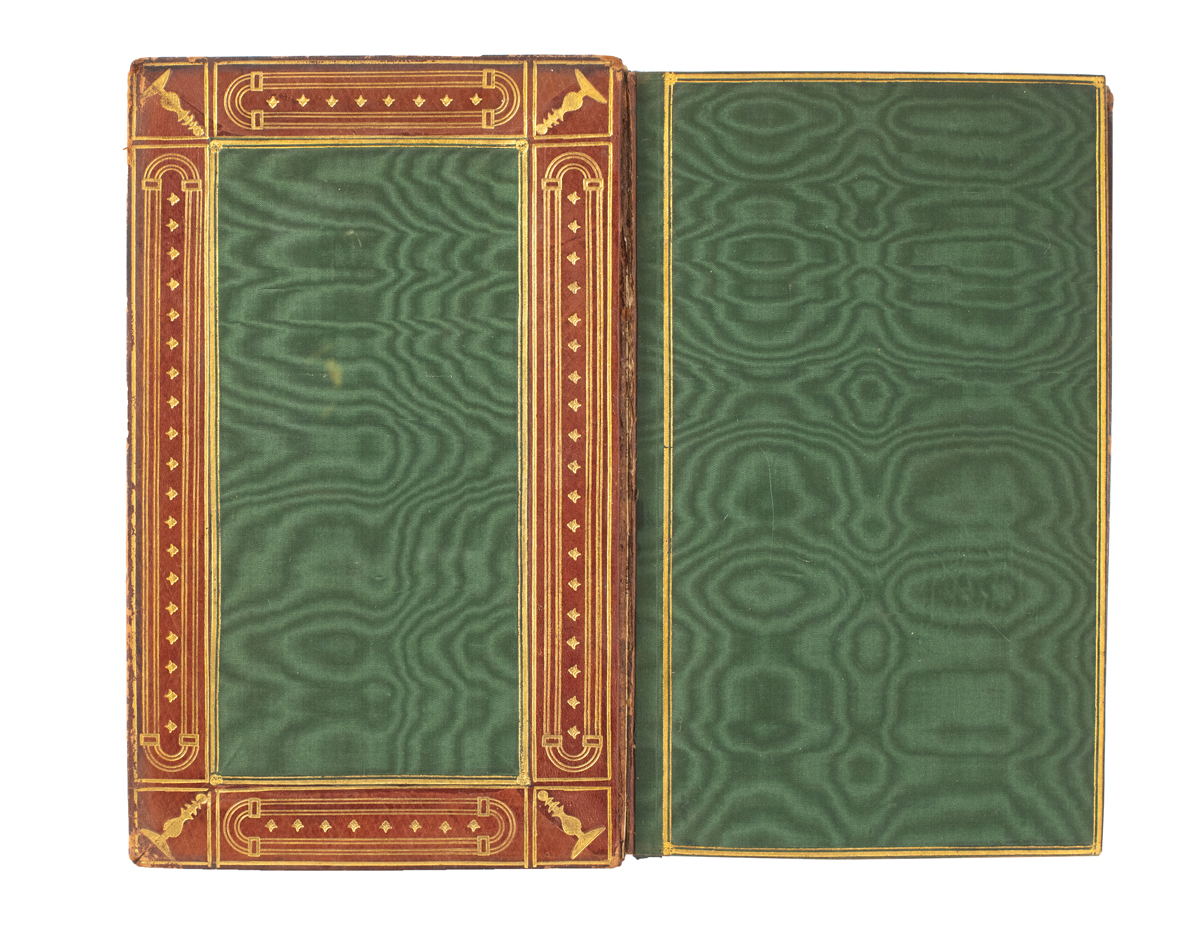
GRECO, Gioachino (William LEWIS, translator).
A treatise on the game of chess, by Gioachino Greco; translated from the French. To which are added, numerous remarks, critical and explanatory, by William Lewis, author of several works on chess. London, W.
Simpkin and R. Marshall, 1833.
8vo, pp. ix, [3], 148, interleaved throughout; recto of second leaf (dedication) slightly oxidised, a few isolated spots, but a good copy in contemporary diced russia gilt, upper cover stamped in gilt with a knight on horseback and the text ‘Texuntque fugas et proelia ludo’, lower cover bearing the same stamp and the text ‘Ludimus effigiem belli’, chess pieces stamped in gilt in compartments of spine, wide inner dentelles tooled in gilt and with pawn motif stamped in gilt in corners, green watered silk endpapers with border ruled in gold, marbled edges; extremities rubbed, head and foot of spine slightly chipped, lower joint cracked, upper joint sometime neatly repaired.

Added to your basket:
A treatise on the game of chess, by Gioachino Greco; translated from the French. To which are added, numerous remarks, critical and explanatory, by William Lewis, author of several works on chess. London, W.
Second edition of William Lewis’s translation of Greco; first published in 1819. William Lewis (1787–1870) learned chess under Jacob Henry Sarratt and went on to run a well-known chess school at 5 Nassau Street, Soho. ‘He took part in the correspondence chess match between Edinburgh chess club and London chess club during 1824–8. Some sources refer to financial difficulties and bankruptcy in 1828 as a result of an unfortunate speculation in piano manufacture …. Lewis was the author of numerous works on chess, mostly elementary in character and drawing on those of his teacher Sarratt …. “The last and one of the best of the “old” writers” (Hooper and Whyld, 224–5), his output was superseded by that of authors such as Staunton, more willing to synthesize previous work – including Lewis’s own – as a foundation for further analysis, and less inclined to reinvent the wheel for themselves’ (ODNB).
The remarkable binding of our copy incorporates a quote from Virgil, ‘Texuntque fugas et proelia ludo’ (‘and wove mimic flights and battles fought for play’, Aeneid Book 5, line 593) and the first line of Vida’s Scacchia ludus, ‘Ludimus effigiem belli’ (‘we are playing an image of war’). These texts tend to suggest that the binding was commissioned by, or presented to, a military man with an interest in chess.
Van der Linde I, p. 367.
